Inhabitants of Water Basins of Belarus
Newsletter # 15 (818) April 10, 2019
On April 17, 2019 the Ministry of Communications and Informatization of the Republic of Belarus will issue 4 stamps of the series “Inhabitants of water basins of Belarus”. Artist: Alexander Mityanin.Design: Marina Vitkovskaya. Print process: offset. Colour: multicoloured. Paper: chalk-surfaced, gummed. Perforations: comb 131/2: 13. Stamps size: 37x26 mm. Sheets composition: 8 (2x4) stamps. The stamps are located in strips tete-beche. Sheets size: 92x129 mm. While printing the stamps they used the technology of relief stamping and selective glossy UV varnishing. Print quantity: 56.000 stamps each. Printer: Unitary Enterprise “Bobruisk Integrated Printing House named after A. T. Nepogodin”. Face value A is equal to the tariff of a letter up to 20 gram within Belarus. Face value N is equal to the surface tariff of a postcard abroad. Face value M is equal to the air-mail tariff of a postcard abroad. Face value H is equal to the surface tariff of a letter up to 20 gram abroad. |
No. 1300 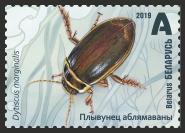 Great diving beetle (Dytiscus marginalis) A 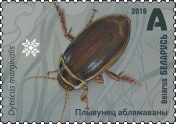 Element of protection | 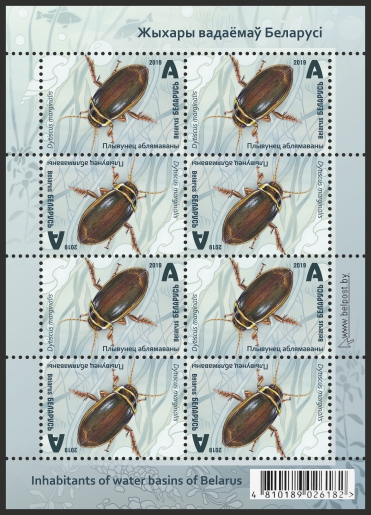 |
No. 1301 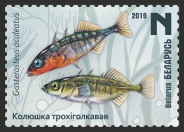 Three-spined stickleback(Gasterosteus aculeatus) N 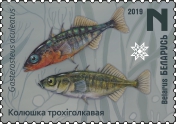 Element of protection | 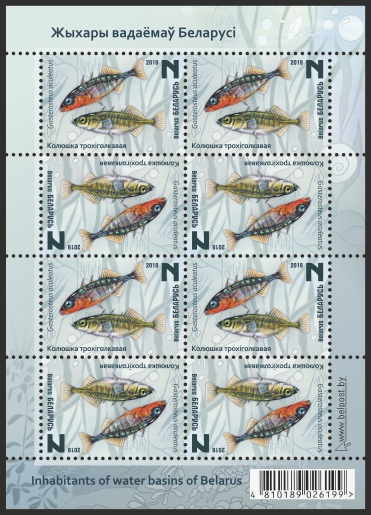 |
No. 1302 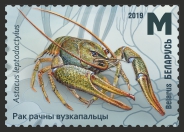 Narrow-clawed crayfish (Astacus leptodactylus) M 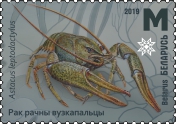 Element of protection | 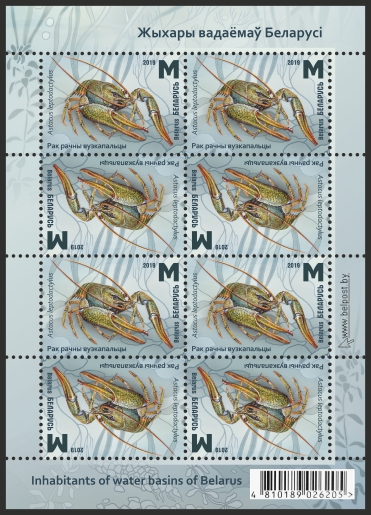 |
No. 1303 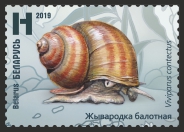 Lister's river snail (Viviparus contectus) H 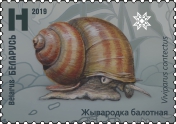 Element of protection | 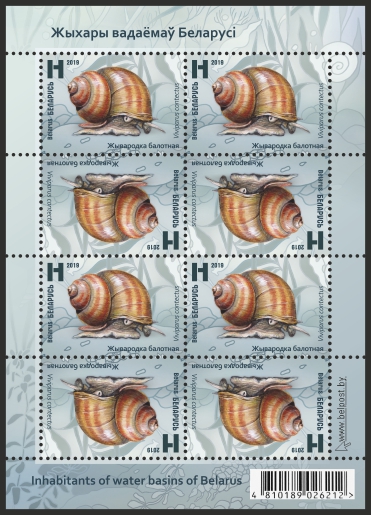 |
A sheetlet is also issued. Sheetlet composition: 4 (1 set) stamps. Sheetlet size: 96x84 mm. Print quantity: 15.000 sheetlets. |
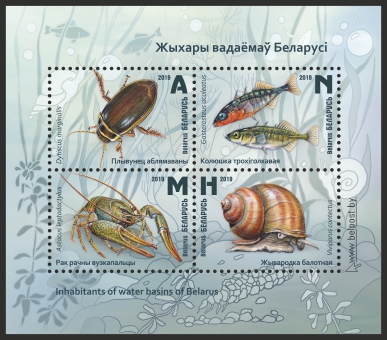 |
The great diving beetle (Dytiscus marginalis) is native to Europe and northern Asia. It lives in fresh water, either still or slow-running. This beetle hunts a wide variety of prey including small aquatic insects, fish and frogs. Its body has an elongated shape that makes it easy to move in the water. These beetles are able fliers, but they rarely do this, mostly when their living conditions become unfavorable and it becomes necessary to move to another water body. The three-spined stickleback (Gasterosteus aculeatus) lives in rivers, lakes and sea coasts of Europe, the Far East, the west and east of North America. It usually inhabits coastal waters or freshwater bodies. The name was due to the three spines located in front of the dorsal fin. Its body length reaches 12 centimetres with a weight of 4 gram. The narrow-clawed crayfish (Astacus leptodactylus) is common in freshwaters throughout Europe. Its length is from 16 to 18 cm, sometimes up to 30 cm. It prefers warm, nutrient-rich low-lying bodies of water or slow flowing rivers. It also lives in polluted water. The lister’s river snail (Viviparus contectus) lives in shallow, stagnant, marshy and overgrown reservoirs. The hole of the shell is closed with a lid, which gives the snail the opportunity to survive adverse conditions. Juveniles develop in the mother’s body and are already quite formed. The name of the genus comes from this fact. |
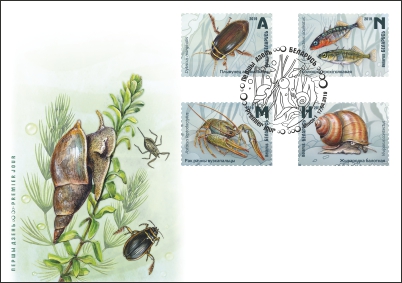 | 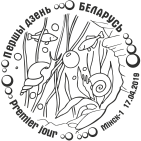 Colour of the postmark — black. Special postmark and FDC painted by A.Mityanin, designed by M.Vitkovskaya. |
A special cancellation on FDC will be carried out at the post office No.1 of Minsk (shop “Philately”,16 Moskovskaya street) on the stamp issuing day. |
The images do not reproduce the exact specifications of the project. |
«# 14 (817)03.04.2019 |Postage stamps of 2019|# 17 (820)26.04.2019 » |
You can also open a PDF formated version of this newsletter or download a PDF zip-compressed file for a later off-line view. | ||
Adobe® Acrobat® Reader® is free software that lets you view and print Adobe Portable Document Format (PDF) files. If you do not have it installed on your computor, please click on the image. | ||


